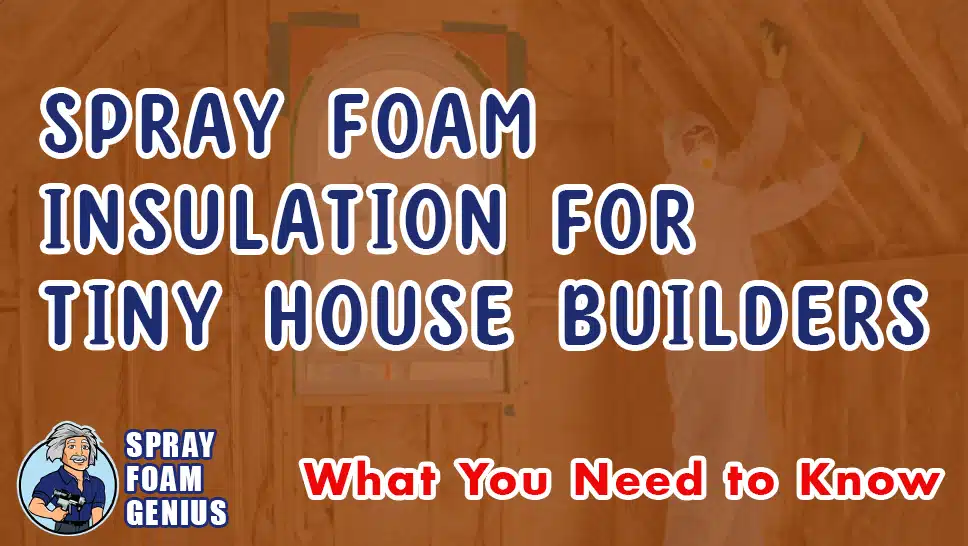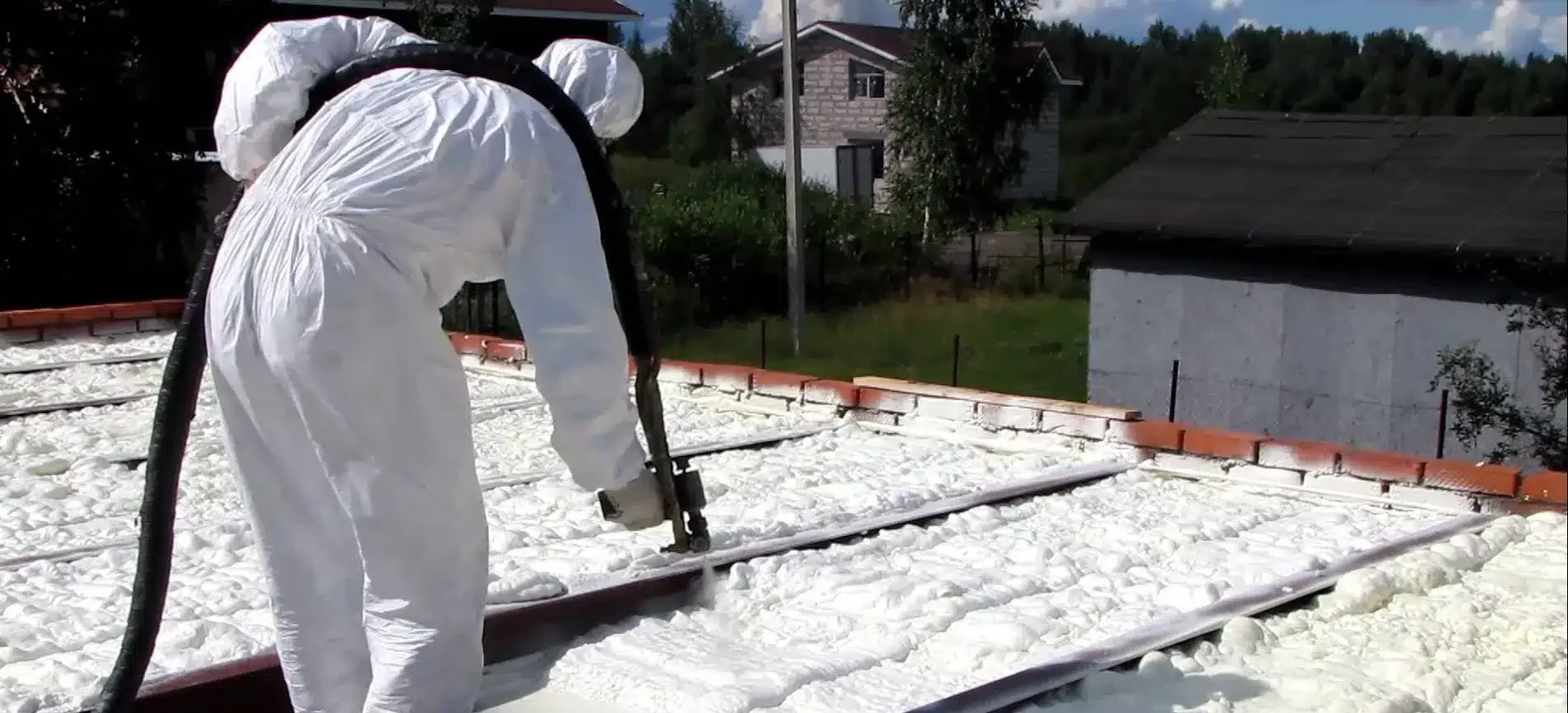
Spray foam insulation is a cutting-edge insulation material used widely in construction for its superior ability to create airtight seals. It expands upon application, filling every nook and cranny, making it highly effective in both energy efficiency and soundproofing. Unlike traditional insulation materials like fiberglass or cellulose, spray foam adheres directly to surfaces, eliminating gaps and reducing the potential for air leakage.
Types of Spray Foam Insulation
- Open-Cell Spray Foam: Known for its lighter, more flexible structure, open-cell spray foam is ideal for interior walls and ceilings where soundproofing and moderate insulation are desired. It provides an effective air barrier while allowing for some moisture permeability, which can be beneficial in certain climates.
- Closed-Cell Spray Foam: Denser and more rigid, closed-cell spray foam offers higher R-values (thermal resistance) and serves as both an insulation and a moisture barrier. This type is perfect for exterior walls, floors, and areas exposed to harsh weather conditions, providing exceptional strength and durability.
Why Choose Spray Foam Insulation for Tiny Homes?
Energy Efficiency
Energy efficiency is critical in tiny homes due to their small space and often mobile nature. Spray foam insulation is superior in this aspect, creating an uninterrupted air barrier that prevents heat loss during the winter and heat gain in the summer. This leads to significant energy savings, as less heating and cooling are required to maintain a comfortable environment, translating to lower utility bills.
Space-Saving Benefits
Every inch counts in a tiny home. Traditional insulation methods like fiberglass batts take up valuable space and may not provide the same level of insulation. Spray foam’s expanding properties allow it to fill smaller cavities without adding bulk, enabling tiny house builders to maximize living space while still achieving optimal insulation.
Moisture and Mold Resistance
Tiny homes, especially those that are mobile, can be susceptible to moisture issues due to changing climates and exposure to the elements. Closed-cell spray foam acts as a barrier against moisture, significantly reducing the risk of mold and mildew growth. This not only protects the structural integrity of your tiny home but also contributes to a healthier indoor environment by improving air quality.
Enhanced Structural Integrity
One lesser-known benefit of closed-cell spray foam is its ability to enhance the structural strength of your tiny home. When applied, it hardens and adds rigidity to walls, floors, and ceilings, which is particularly beneficial for tiny homes that need to withstand the rigors of transportation and varying weather conditions.
Application Focus: Best Practices for Tiny House Builders
Preparing Your Tiny Home for Spray Foam Insulation
Proper preparation is key to a successful spray foam insulation application. Before starting, ensure that all electrical, plumbing, and HVAC installations are complete, as spray foam cannot be applied over these components.
- Seal Gaps and Cracks: Begin by sealing any existing gaps or cracks in the structure of your tiny house. This step will enhance the performance of the spray foam insulation, ensuring that the space is completely airtight.
- Protect Surfaces: Cover windows, doors, and any surfaces that should not come into contact with the foam. This protects against overspray and ensures a clean application.
- Ventilation Considerations: Adequate ventilation is crucial during and after the installation of spray foam, especially when using closed-cell foam. Proper ventilation prevents the buildup of chemicals and fumes, protecting the health of installers and future occupants.
Application Techniques
DIY vs. Professional Installation
While there are DIY spray foam kits available on the market, professional installation is highly recommended for tiny homes. Professionals have the experience, tools, and knowledge to ensure the foam is applied correctly and safely, maximizing its effectiveness. Improper installation can lead to gaps, uneven coverage, and other issues that compromise insulation performance.
Key Areas to Insulate in a Tiny House
- Walls: Proper wall insulation is essential for temperature control and soundproofing. Spray foam is particularly effective in thin walls typical of tiny homes, as it provides high insulation value without taking up much space.
- Roof and Ceiling: The roof is a significant area of heat loss. Insulating the roof and ceiling with spray foam helps maintain consistent temperatures and reduces the strain on heating and cooling systems.
- Flooring: Insulating the floor, especially if your tiny home is elevated or on wheels, prevents cold air from seeping in during the winter. Closed-cell spray foam is ideal for floors as it also acts as a moisture barrier, protecting against dampness from the ground.
- Nooks and Crannies: Tiny homes often have unique architectural features such as lofts, built-in storage, and non-standard shapes. Spray foam’s ability to expand makes it perfect for insulating these irregular spaces that other materials might miss.
Safety Considerations
Safety is paramount when installing spray foam insulation. The installation process involves chemicals that can be hazardous if not handled properly. Here are some key safety tips:
- Personal Protective Equipment (PPE): Installers should wear appropriate PPE, including gloves, goggles, and respiratory protection, to prevent exposure to spray foam chemicals.
- Ventilation: Ensure that the installation area is well-ventilated to disperse fumes and chemicals, reducing the risk of respiratory issues.
- Post-Installation Curing: Allow adequate time for the spray foam to cure fully before occupying the space. This helps prevent exposure to any residual fumes.
Costs and ROI: Is Spray Foam Insulation Worth the Investment?
Initial Costs
Spray foam insulation does come with a higher initial cost compared to traditional insulation methods. The price can vary depending on the size of your tiny home, the type of spray foam used, and whether you choose professional installation. Despite the higher upfront expense, the investment often pays for itself through energy savings, reduced maintenance costs, and increased comfort.
Long-Term Benefits
- Energy Savings: By significantly reducing air leakage, spray foam insulation can cut energy bills by up to 50%, providing a quick return on investment.
- Durability: Spray foam insulation is built to last, with a lifespan that often exceeds that of traditional insulation materials. This means you won’t need to replace or upgrade your insulation frequently.
- Increased Resale Value: Tiny homes with high-quality, energy-efficient insulation are more attractive to buyers. This can boost the resale value, making your tiny home a more profitable investment.
Comparing Costs: Spray Foam vs. Traditional Insulation
While fiberglass and cellulose are cheaper initially, they often require more maintenance, and frequent replacement, and do not provide the same level of energy efficiency as spray foam. Over time, the cumulative savings on energy bills and maintenance make spray foam a more cost-effective solution.
Environmental Impact

Eco-Friendly Insulation Option
Spray foam insulation contributes to environmental sustainability by enhancing energy efficiency. Homes insulated with spray foam require less energy for heating and cooling, reducing greenhouse gas emissions and the overall carbon footprint. Many manufacturers are now offering eco-friendly spray foam options that use water or plant-based materials as blowing agents, making it a greener choice.
Recycling and Disposal
While spray foam is not biodegradable, proper disposal methods are available, and many manufacturers offer recycling programs for unused materials. Choosing a contractor who follows environmentally responsible practices can further reduce the impact of your insulation choice.
Common Myths About Spray Foam Insulation in Tiny Homes
Myth 1: Spray Foam is Too Expensive for Tiny Homes
Although the initial costs can be higher, the long-term benefits of spray foam insulation make it an economical choice. The significant reduction in energy bills and the added durability of your tiny home often justify the investment.
Myth 2: Spray Foam is Not Necessary in Small Spaces
Some believe that tiny homes, due to their small size, do not require high-performance insulation like spray foam. However, the compact nature of tiny homes means that maintaining a stable internal temperature is crucial, and spray foam excels in providing that consistent comfort.
Myth 3: DIY Installation is Just as Effective as Professional Installation
DIY kits may seem like a cost-effective option, but they often lack the quality and precision of professional installations. Hiring a certified spray foam contractor ensures that the insulation is applied correctly, without gaps or uneven coverage, maximizing its effectiveness and longevity.
How to Get Started with Spray Foam Insulation for Your Tiny Home
Choosing the Right Contractor
Selecting the right contractor is critical to the success of your insulation project. Look for contractors who specialize in spray foam insulation for tiny homes and have a strong reputation for quality work. Check for certifications, read reviews, and ask for references to ensure you’re working with a reliable professional.
Getting a Quote
To get started, contact us at Spray Foam Genius Marketing for a personalized quote. Our team will assess your tiny home’s insulation needs and provide a detailed plan and cost estimate tailored to your project.
Ready to Insulate Your Tiny Home?
If you’re ready to enhance your tiny home with the best insulation solution, reach out to us today! Call us at 877-840-FOAM for USA and 844-741-FOAM for Canada, visit our website at https://sprayfoamgeniusmarketing.com or email us at [email protected].
Let’s help you create a more energy-efficient, comfortable, and durable tiny home today!
- How to Use Pinterest to Market Your Spray Foam Insulation Services - December 27, 2023
- How to Use LinkedIn to Grow Your Spray Foam Insulation Business - December 23, 2023
- How to Use Instagram to Showcase Your Spray Foam Insulation Projects - December 16, 2023

